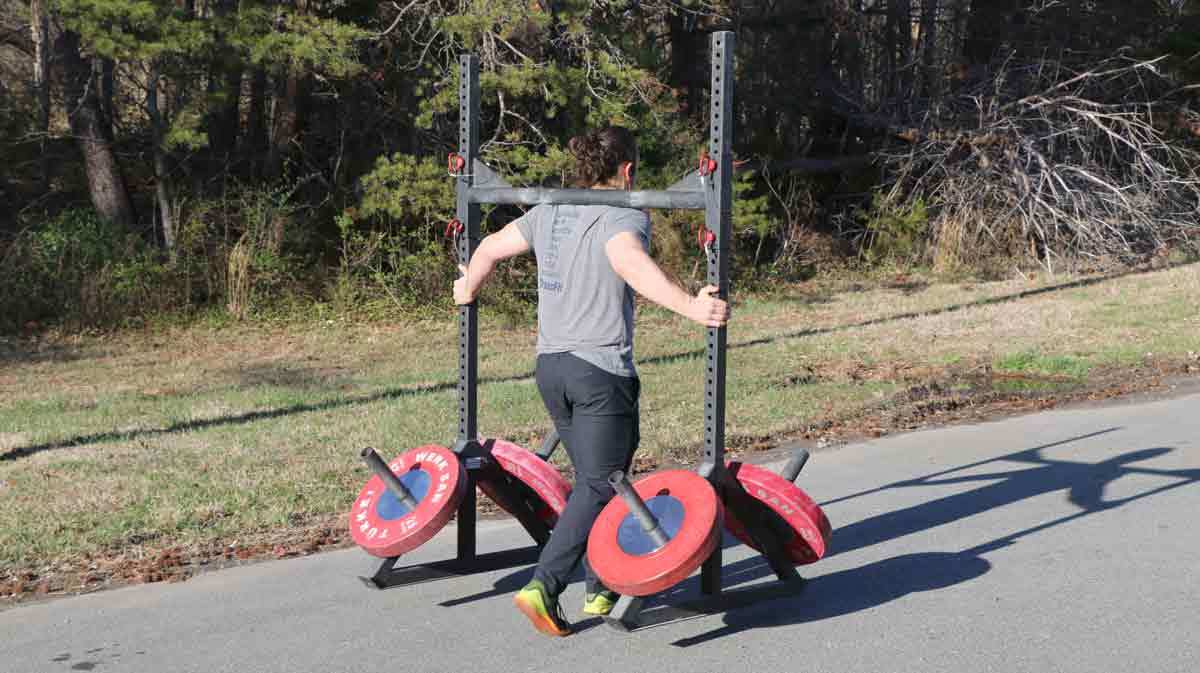My own athletes have questioned the reasoning behind why I add conditioning to their programs.
“I’m a strength athlete, why do I need conditioning?”
“Will doing GPP affect my strength?”
Eric Bowman wrote a great article about heart health and how it relates to the strength athlete. His focus was mainly on bigger athletes, and I completely agree with his assessment of how those athletes can begin to make improvements in their cardiovascular health. My focus for this article is on the strength athlete in general – and why it is a good idea for all strength athletes to condition.
[thrive_leads id=’9790′]
CrossFit
Both the sports of weightlifting and powerlifting have become more mainstream in recent years partly due to the popularity of CrossFit. I find there are generally three types of CrossFit athletes:
- The athlete who does CrossFit for their health and for the community.
- The athlete who does CrossFit, finds a passion for competing, and may aspire to make it to the CrossFit Games one day.
- The athlete who finds CrossFit and, as much as they enjoy it, finds a passion in a specialty within the sport with either weightlifting or powerlifting.
Personally, I started out in category two and (after a couple injuries) moved to category three. The benefit for the athletes who come into the sports of powerlifting and weightlifting through CrossFit is they generally like to condition and have built up a good work capacity. They don’t have to be convinced to do GPP. This will normally carry over in some form or fashion into their new sport. It is the athlete who finds weightlifting or powerlifting through other avenues who might be de-conditioned and not see the value in conditioning.

What GPP Really Is
General Physical Preparedness (GPP) is defined by Athlepedia as “a preparatory phase of training that is intended to provide balanced physical conditioning in endurance, strength, speed, flexibility, and other basic factors of fitness… it can be considered all-around fitness.”
Merriam Webster defines conditioning as “the process of training to become physically fit by a regimen of exercise, diet, and rest.”
If you live a balanced life, which for your sake, I hope you do, your sport does not define you. You have family, friends, and a job. Training only takes up a small portion of your 24-hour day.
Ask yourself these questions:
- Can you walk across a room without getting winded?
- Can you walk up a flight of stairs without getting winded?
- Can you easily get up and down off the floor?
- Can you sit Indian style on the floor?
- Can you touch your toes?
- Can you squat barefoot?
If you said no to any of these questions, then you have room for improvement! What is the point of being able to lift a huge amount of weight if daily tasks are difficult? I don’t know if I’ve ever heard someone say, “Man, I wish I wasn’t in such good shape.” Have you?
While strength may be your focus in the gym, the conditioning gets you prepared for other important things outside of the gym:
- Flexibility to get on the floor and play with your small children
- Endurance to get out in the yard and throw a football or baseball with your teenager
- Energy for sex
Adding in Conditioning
Generalized conditioning for both a powerlifter and a weightlifter would include some of the following:
- Low impact steady state cardio at 75% heart rate. You can do this on a bike, rower, or treadmill/road. You could start with 20 minutes and slowly build each week up to 60 minutes depending on how much time you have. I personally prefer not to run. I feel it too much in my lower back and hamstrings the next day. You can speed walk if you don’t have any other equipment.
- Row or Bike Intervals. You can do anywhere from 10-40 sets with varied timed intervals. You can start out on the low end and build each week . My favorite is 20-30 seconds of work with 30-40 seconds of rest. Eventually, you can remove the rest and do 20-30 seconds fast and 30-40 seconds recovery pace for the same number of sets.
- Strongman implements are great for conditioning. You will feel it while you are performing the movement, but there is usually no residual muscle damage or soreness. I like to do these as part of my accessory work and treat it like a conditioning piece. Most days, I am limited on time, so I get more bang for my buck by turning it into:
- Carries – Zercher, farmer (unilateral and bilateral), overhead carries (unilateral and bilateral), front rack, sandbag
- Sled work

Conditioning for powerlifters and weightlifters should be a complementary piece and can be done wrong IF you are choosing exercises that cause additional muscle damage on top of what you already get with your sport. Movements to avoid are anything that has an eccentric portion, especially with load. Examples of the eccentric portion would be the descent in the squat or deadlift. Research says the eccentric portion of the movement can cause DOMS (delayed onset muscle soreness). Because you get all the benefits from eccentric training in your strength movements, there is no need to add additional muscle damage and soreness in the conditioning piece.
For my CrossFit athletes who are in a strength cycle, they will do barbell cycling during downsets as part of their conditioning. Being able to barbell cycle during a workout for competitive CrossFit athletes is extremely important. Speed and efficiency with these movements can make or break a workout.
Something important to note for competitive weightlifters is when lifting in a meet, you may not know how much time you have between lifts. You may think you have two minutes, but then someone takes your clock. That puts you right back up in the hot seat. Conditioned athletes are prepared for that moment. It’s the deconditioned athlete who comes off the stage winded from an attempt that may crumble if they have to step right back up.
[thrive_leads id=’8207′]
I hope you read this article and can now see the value in adding conditioning to your training if you didn’t before. You receive benefits directly related to your sport from conditioning – but more importantly, you are able to enjoy all the little things in life that require you to have energy, endurance, and flexibility.
Sources:
Eccentric Exercise: A Comprehensive Review of a Distinctive Training Method
